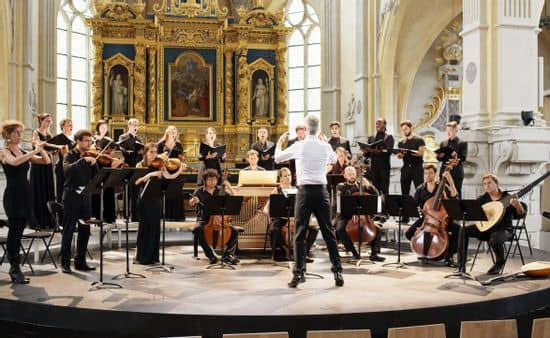Potsdam
From the Sun to the Enlightenment
From the early years of his reign, the Sun King placed the arts at the heart of his policy : not only for the pleasure they brought to court life, where aristocrats, potential rebels, were kept in semi-captivity, but also to symbolize unlimited power. Thus, all fields (gardens, architecture, sculpture, painting, etc.) were called upon to develop a specifically French art whose quality and splendor would make other nations jealous, leaving them with no choice but to import it.
Music was no exception to this grand design, and within a few years, the French art of playing, singing, and dancing had spread throughout Europe. The French and Italian styles, which had coexisted until then, became increasingly opposed, and this rivalry would last for decades. Lully became the fierce champion of the French style, claiming to have invented it, forgetting that he himself came from the Florentine countryside and that French opera was not his invention, but that of Cambert. He became more nationalistic than the king: music was his power.
However, during Mazarin’s time as prime minister, Venetian music resonated in Paris, French composers were curious about it, and the great Cavalli was even invited to compose the grand opera for Louis XIV’s marriage to the Infanta of Spain : Ercole Amante, performed at the Tuileries in 1662, inspiring generations of French artists, many of whom were very curious about innovations from beyond the Alps. Charpentier (who stayed in Rome), Campra, Couperin, and many others instilled the “Italian taste” in their works. The appeal of Venice, often fantasized about for the imagery it conjures up, from its festive canals to its palaces and carnival, can be felt in the compositions : Campra composed Les fêtes Vénitiennes (Venetian Festivals) and Le Carnaval de Venise (The Carnival of Venice) without ever having set foot there !
This Italian presence in Paris, often controversial both aesthetically and politically, continued until Jean-Philippe Rameau in the 18th century. However, it was the artists who definitively sealed their union in a style that took the best of Italy and France, where lightness rubbed shoulders with tragedy, and decorative Italian ariettas with grand narratives in French. Anacréon, composed in 1757 brings together all these ingredients. Although now recognized as the French musical genius of the Enlightenment, his music is sprinkled with harmonies spiced with Italy, the violins are clearly inspired by virtuosos from beyond the Alps, and the vocal art is liberated. Thus, from reflections on the canals of Venice to the Enlightenment in Paris, it is the aesthetic of pleasure that prevails in the work of this great master of opera.
